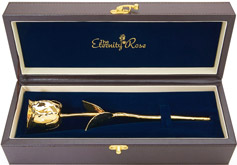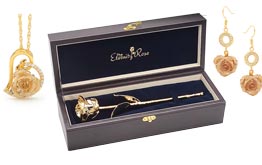The Art of Active Listening: A Guide to Building Strong Relationships
Communication is the lifeblood of our interactions, and at the heart of meaningful communication lies the often-overlooked skill of active listening. It goes beyond the surface of hearing words; it's about truly understanding the emotions, intentions, and messages conveyed by the speaker. Active listening is an art form, a skill that transforms ordinary conversations into profound exchanges, fostering deeper connections in both personal and professional settings.
Understanding Active Listening
Active listening is more than a technique; it's a mindset and a commitment to fully engage with the speaker. It involves a conscious effort to comprehend not just the words being spoken but also the underlying emotions and nuances. Active listening requires presence, empathy, and a genuine desire to understand the speaker's perspective.
The Importance of Active Listening
In a world that often values quick responses and immediate solutions, the art of active listening can be overshadowed. However, its importance cannot be overstated. Active listening contributes to building trust, strengthening relationships, and creating an open and positive communication environment. It is the foundation of effective communication, allowing individuals to connect on a deeper level.
Here are 10 active listening techniques for masterful communication:
1. Be Fully Present
Active listening begins with being fully present in the moment. Eliminate distractions, put away electronic devices, and focus on the speaker. Engage your senses—listen, observe, and give your undivided attention. By being fully present, you signal to the speaker that their words matter and that you value the conversation.
2. Pay Attention to Non-Verbal Cues
Communication is not limited to words alone; non-verbal cues convey a wealth of information. Pay close attention to body language, facial expressions, and gestures. These cues provide insights into the speaker's emotional state, allowing you to understand the message on a deeper level. Maintain open and inviting body language to create a comfortable space for expression.
3. Keep Good Eye Contact
Eye contact is a powerful tool in active listening. It establishes a connection between the listener and the speaker, conveying attentiveness and interest. Striking the right balance is crucial - maintain eye contact without making the other person uncomfortable. The 50/70 rule is a helpful guide, suggesting that maintaining eye contact for 50% to 70% of the conversation time is optimal.
4. Ask Open-Ended Questions
Encourage meaningful dialogue by asking open-ended questions. Unlike closed-ended questions that elicit a simple "yes" or "no," open-ended questions invite the speaker to share thoughts, experiences, and emotions. Examples include, "Can you tell me more about that?" or "How do you envision moving forward?" These questions stimulate deeper reflection and contribute to a richer conversation.
5. Reflect What You Hear
After the speaker has shared their thoughts, take a moment to reflect back what you've heard. This not only confirms your understanding but also validates the speaker's perspective. Paraphrase or summarize the key points, allowing the speaker to clarify or expand on their thoughts. This reflective practice minimizes the risk of miscommunication and demonstrates a genuine commitment to understanding.
6. Be Patient
Patience is a virtue in active listening. Allow the speaker to express themselves without interruption. Resist the urge to formulate responses while the other person is speaking, and refrain from interjecting with your own thoughts. Patience creates a space for unhurried expression, fostering a more profound exchange of ideas and feelings.
7. Withhold Judgment
Maintain a non-judgmental and neutral stance during the conversation. Create an atmosphere where the speaker feels safe expressing their thoughts and emotions without fear of criticism. Practice empathy, seek to understand, and suspend any preconceived notions. By withholding judgment, you encourage open communication and build a foundation of trust.
8. Summarize and Clarify
As the conversation unfolds, periodically summarize what you've heard to ensure clarity. This not only demonstrates your engagement but also provides an opportunity for the speaker to correct any misunderstandings. Summarizing reinforces the key points and keeps the conversation on track.
9. Use Positive Reinforcement
Offer positive reinforcement to acknowledge the speaker's contributions. Simple gestures such as nodding, smiling, or verbal affirmations like "I understand" or "That makes sense" convey that you are actively listening and appreciating the speaker's perspective. Positive reinforcement encourages openness and builds rapport.
10. Empathize and Validate
Empathy is a cornerstone of active listening. Put yourself in the speaker's shoes, trying to understand their emotions and experiences. Acknowledge their feelings and validate their perspective. Phrases like "I can imagine that must be difficult for you" or "It sounds like you're feeling..." convey empathy and create a supportive environment.
Conclusion
In the fast-paced world of communication, active listening stands out as a transformative skill. By incorporating these ten active listening techniques into your daily interactions, you can elevate your communication skills and build stronger, more meaningful relationships and connections. Active listening is not just about hearing; it's about understanding, connecting, and responding with empathy. As you make these techniques a part of your communication toolkit, watch how they enrich your relationships and contribute to a more harmonious and collaborative environment.



















